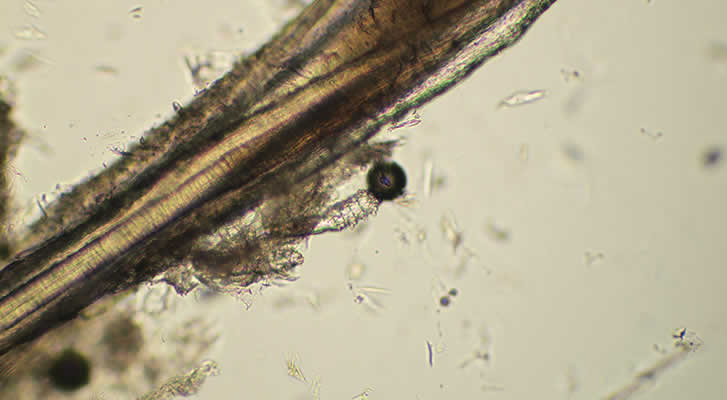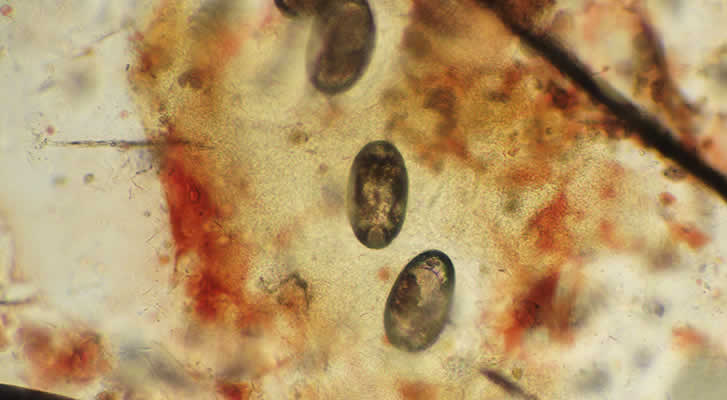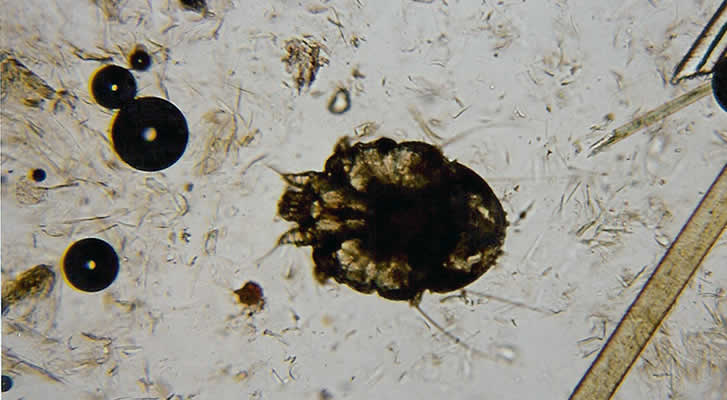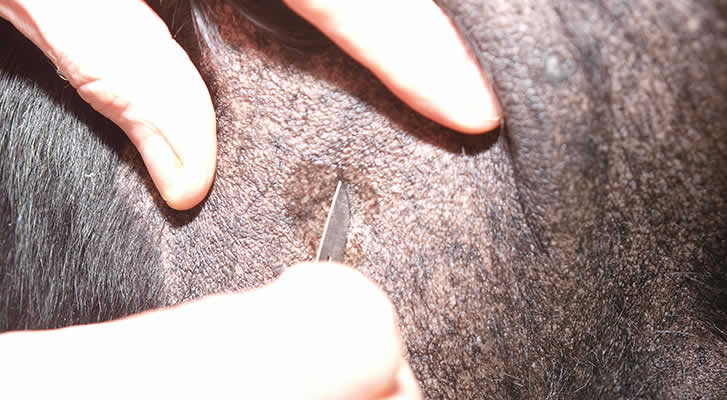Skin Scraping
Why do we have to perform skin scrapings at the outset of a dermatological diagnostic work-up?
Skin scrapings are necessary for the majority of dermatological diagnostic work-ups. Diseases such as demodectic mange can usually easily be diagnosed by this method.
A small amount of liquid paraffin is placed onto the skin and the skin is then gently scraped until there is oozing of blood from capillaries. Scrapings have to be this deep as these demodex mites live deep down inside the hair follicles.
Mites can also sometimes be found from hair plucks if the roots are examined in liquid paraffin under the microscope. More superficial scrapings will be used to find the mites causing sarcoptic mange (scabies) or when there is Cheyletiella (Fur Mites). These mite infestations can often look like an allergy case as they can result in itching and scratching, so it is imperative that parasites are ruled out at the outset.
If these steps are missed or not performed properly it could result in incorrect treatment being given to your pet. We have seen several cases of atopic dermatitis that have been on steroids for a long time and have flared up after being under reasonable control. This is due to the development of adult-onset demodectic mange as a consequence of being on steroids.
Without performing skin scrapings and making the diagnosis it could have resulted in more steroids being given and making the condition even worse.
Demodex hair root
Sarcoptes scabiei eggs
Demodex canis mite adjacent to hair root
Sarcoptes scabiei
Skin Scraping
If you’ve noticed skin or ear problems in your pet, it’s vital that you contact specialised veterinary professionals before symptoms worsen. To book an appointment with our small animal skin and ear experts, simply call us below or email us on dgb@dermvet.co.uk.






